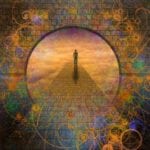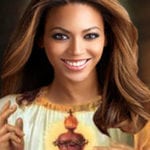 Technology
Technology  Technology
Technology  Humans
Humans 10 Everyday Human Behaviors That Are Actually Survival Instincts
 Animals
Animals 10 Animals That Humiliated and Harmed Historical Leaders
 History
History 10 Most Influential Protests in Modern History
 Creepy
Creepy 10 More Representations of Death from Myth, Legend, and Folktale
 Technology
Technology 10 Scientific Breakthroughs of 2025 That’ll Change Everything
 Our World
Our World 10 Ways Icelandic Culture Makes Other Countries Look Boring
 Misconceptions
Misconceptions 10 Common Misconceptions About the Victorian Era
 Mysteries
Mysteries 10 Strange Unexplained Mysteries of 2025
 Miscellaneous
Miscellaneous 10 of History’s Most Bell-Ringing Finishing Moves
 Technology
Technology Top 10 Everyday Tech Buzzwords That Hide a Darker Past
 Humans
Humans 10 Everyday Human Behaviors That Are Actually Survival Instincts
 Animals
Animals 10 Animals That Humiliated and Harmed Historical Leaders
Who's Behind Listverse?

Jamie Frater
Head Editor
Jamie founded Listverse due to an insatiable desire to share fascinating, obscure, and bizarre facts. He has been a guest speaker on numerous national radio and television stations and is a five time published author.
More About Us History
History 10 Most Influential Protests in Modern History
 Creepy
Creepy 10 More Representations of Death from Myth, Legend, and Folktale
 Technology
Technology 10 Scientific Breakthroughs of 2025 That’ll Change Everything
 Our World
Our World 10 Ways Icelandic Culture Makes Other Countries Look Boring
 Misconceptions
Misconceptions 10 Common Misconceptions About the Victorian Era
 Mysteries
Mysteries 10 Strange Unexplained Mysteries of 2025
 Miscellaneous
Miscellaneous 10 of History’s Most Bell-Ringing Finishing Moves
10 Uncommon And Unorthodox Conceptions Of God
Some believe there are many gods, others believe there is only one, and still others believe there isn’t a God at all. Some believe that we can never really have any definitive proof one way or another in this world. Nevertheless, throughout history, people have tried to wrap their heads around the knotty question of who or what God is, and some of the answers are both surprising and mind-bending.
10 Apeirotheism

In the late 19th century, philosopher Thomas Davidson developed apeirotheism, or “the theory of Gods infinite in number.” His ideas were inspired by the individualist thought of Aristotle and Leibniz, the idea of vita nuova, or spiritual regeneration, from Rosmini and Dante, as well as the social activism of the proto-Fabians. Davidson believed there was a primary or archetypal individual or God, which he referred to as thinking or Nous. God thinks only of Himself, but with His being, there must be some content, so His identity is not completely abstract. Therefore, He must include the world as part of Himself.
This world contains secondary individual selves or Gods, who emerge from the primary individual. They’re more of an essence than a unique individual, like droplets on a glass of water. Through cooperation, love, and the drive for possibilities, these secondary Gods can approach the perfection of the primary. Therefore, the potential exists for an infinite number of God-selves in the universe.
There were social and religious implications to Davidson’s theology. It is both democratic and perfectionist: We each contain the potential to be God within us, but social restrictions make it almost impossible to realize. However, we carry the instincts of God inside ourselves, and by becoming closer to the God potential within us through self-cultivation and nurturing others, we become more perfect moral beings. Davidson believed that cultivating this internal divinity was the only true way of achieving meaningful social reform.
9 Suitheism
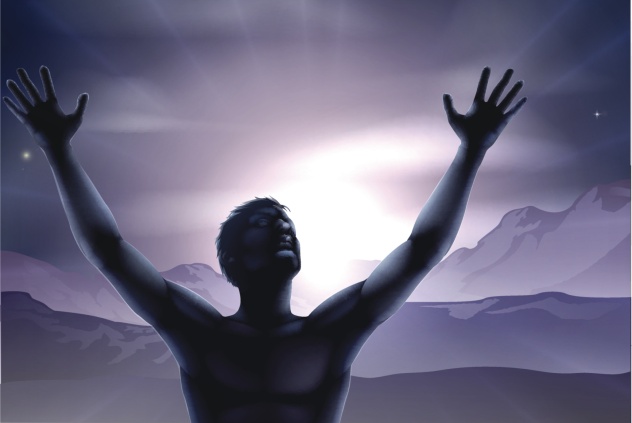
A Suitheist is a person who “believes themselves to be a god, but does not deny the existence of other gods,” or rather someone who worships themselves as a god, but does not narcisstically demand worship from other people. (After all, they’re gods, too.) This belief is held by some Satanists and Left Hand Path Pagans.
The term was invented in 2001 from the Latin sui, “of oneself,” and the Greek theism, the “belief in God or gods.” This term differs from an earlier English word for a similar concept—autotheism, which can mean “belief that one is God incarnate or that one is Christ,” “the soul becomes identical with God,” “becoming wholly one with God,” “belief in self-subsistence of God the Son,” or “heresy that Jesus is God in Himself independent of the Godhead,” depending on context. As these meanings were all somewhat inappropriately tied with Christian theology, a new term was developed in lieu of autotheism.
Suitheism places divinity and the source of life’s value within each individual, rather than the larger whole. The purpose is to develop an inner sense of meaning and value that seems reasonable to you as an individual. There are different kinds of suitheists. Elitist suitheists believe some are more divine than others, while egalitarian suitheists believe godhood is a natural right and the original state of all individuals. There are also aesthetic differences to the theology: Some suitheists appropriate dark imagery from religion and folklore to represent their personal ideals and Selfhood, while others prefer light, new-age imagery.
8 Duotheism, Bitheism Or Dualism
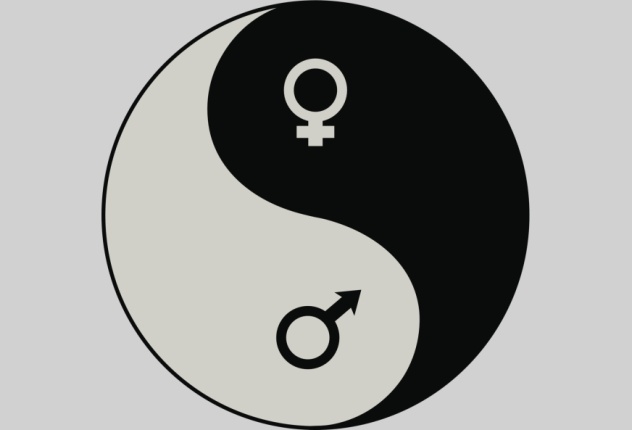
Duotheism is the idea that there are two deities of equal power over the universe. In ancient Zoroastrianism, these were defined as a God of Good, Ahura Mazda or Ohrmazd, and a God of Evil, Angra Mainyu or “the Lie.” Ahura Mazda was a creative force who formed a pure world for humans to live in, while Angra Mainyu was a destructive and negative force that attacked it and made it impure. Human beings are left to choose between two moral paths, one leading to righteousness and Heaven, the other leading to evil and Hell.
Choice was emphasized, for only when all mankind chose the path of righteousness would evil be defeated and paradise be achieved on Earth. Later doctrines from the Sassanid period stated that after 9,000 years, the forces of good will overcome the forces of evil. Zoroastrian thinking may have influenced the Jewish conception of Satan, though he was demoted to a renegade angel rather than an evil oppositional god of near co-equal power.
However, in more recent times, the concept of duotheism has been redeveloped in modern Wicca to mean a male god and a female god, sometimes referred to as Lord and Lady. Though modern Wiccas are heterodox in their beliefs and practices, with some adopting polytheistic, pantheistic, or even monotheistic beliefs, some Wiccans believe that all deities worshiped throughout history are reflections of an archetypal God and Goddess, sometimes called the Horned God of Hunting and the Goddess of Fertility.
7 Hylotheism
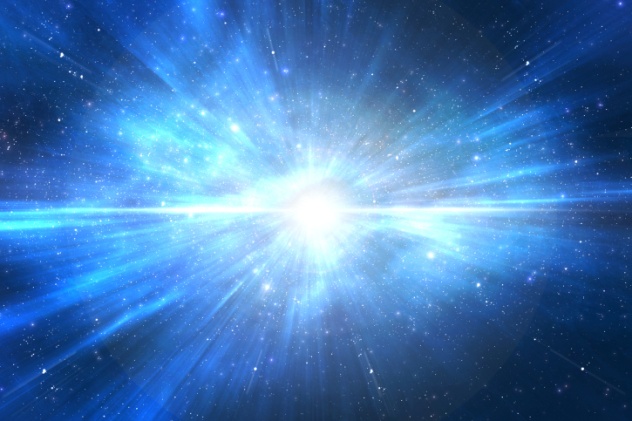
Hylotheism is the idea that there is no distinction between matter and God. This doesn’t refer to physical form, but rather the “enduring possibility of being.” The physical universe wasn’t created by a perfect God; it exists because the divine existence depends on it, as God has no meaning without existence, and existence has no endurance without God. This concept of hylotheism, which emerged from liberal Judaism and was named by Alvin J. Reines, sees a compact between man and God for the actualization of the universe: “Man acts, and so God reacts.”
The hylotheistic God combines the possibility of being (which endures, but doesn’t exist) with actuality (which exists, but cannot endure). The hylotheistic God is therefore present whenever potentiality becomes actuality, or whenever we perceive the world through the senses or conceive something in the world. For the hylotheists, this is an explanation for the question, “Why becoming?”—as in, “Why does change or process occur?” Hylotheism states that it emerges from the imperfection in the Godhead and its inability to definitively overcome nonexistence. God is a maelstrom of potentialities coming into and going out of existence, explaining the existence of time and change within our universe.
6 Monolatry
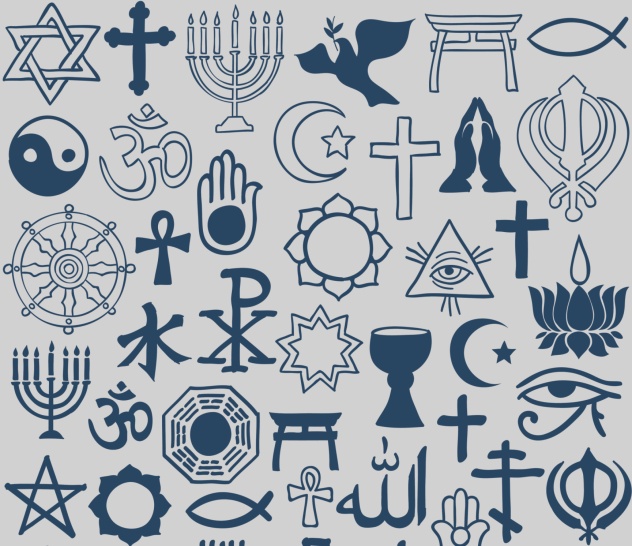
In this conception of God, it is accepted that multiple gods exist, but you should only worship one. Monolatry combines the Greek monos, “one,” with latreia, “worship,” and is somewhat common among tribal communities in African, Indian, Pacific, and Native American societies. It can also be found in the Jewish scriptures, which acknowledged the existence of foreign gods worshiped by non-Hebrew peoples such as Baal, Astarte, Milcom, Chemosh, and Molech. This can be seen as a progression from polytheism, the worship of multiple gods, through henotheism, the worship of multiple gods with one supreme god, but it is a step before monotheism, which only believes in the existence of a single deity.
While modern Abrahamic religions are monotheistic, there are more references to monolatry in the Bible, such as in the Ten Commandments, where Yahweh announces His jealousy of lesser gods. Monolatry differs from a similar belief, henotheism, in which multiple gods are believed in, while a supreme god is recognized. In monolatry, multiple gods are acknowledged to exist, while only a single god is considered worthy of worship. In Hinduism, monolatrist practice is known as the worship of Ishtadeva or Ishtadevi, meaning the god or goddess of one’s own liking.
5 Tritheism
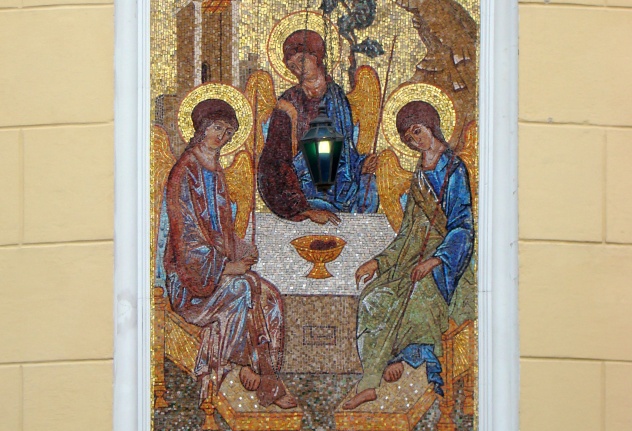
The Catholic doctrine of the Trinity states that God is one being divided into three co-equal, co-eternal persons—God the Father, God the Son, and God the Holy Spirit. However, the scriptures describing this are also emphatic on the monotheist nature of God. The triune God is divided into three “centers of self-consciousness,” which are distinct from and can communicate with each other and also possess all the traits of divinity in themselves but are really just part of a single being with one indivisible essence. This doctrine, regarded as one of the chief divine mysteries of the Catholic faith, differs from Tritheism, which states that the Father, Son, and the Holy Ghost are actually three separate gods.
Roscellinus, an 11th-century Frenchman, argued for Tritheism on the basis that he found it impossible to believe that God the Son could become incarnate without God the Father and God the Holy Spirit also becoming incarnate, meaning they must be three separate objects or entities, though united by a single will. It seems a slight distinction, but it’s a serious theological one. Roscellinus was persecuted and repeatedly exiled until he retired.
Some mainstream Christians believe that Mormonism is Tritheistic, claiming God the Father was once a man on another world who came to Earth with his wife and begat God the Son, while God the Holy Spirit is another god entirely. Mormons deny charges of Tritheism and say they believe in a single God but define Him as a “divine community” of three, with the Father as the fount of divinity and center of worship.
4 Kathenotheism

The term “kathenotheism” was developed by the 19th-century German scholar Max Muller, who was struggling to understand whether Hinduism was monotheistic or polytheistic. He initially developed the term “henotheism” (described above) but soon realized that it could be distinguished into monolatry (as practiced by the Ganapatya worshipers of Ganesha) and kathenotheism, described as worshiping gods one at a time, each time accepting them as the supreme manifestation of the divine.
Some refer to kathenotheism as the religious equivalent of serial monogamy—“You, Indra, are the only god I’ve ever worshiped,” “You, Varuna, are the only god I’ve ever worshiped,” and so on. This is evident from poems in the ancient Rig Veda, which seem to ascribe individual features to each deity but then give credit to different gods for the same deeds, like separating the Earth from the sky. In kathenotheistic worship, the deity whom you are worshiping is indeed the supreme, but so is the deity whom you’ll worship next week. Kathenotheism was monotheism or monolatry limited by time, which meant that the competing and successive claims of supreme divinity ultimately canceled each other out in the pantheon.
3 Misotheism
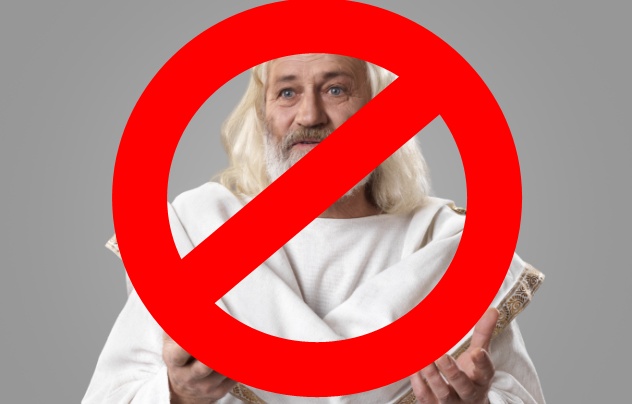
Misotheism is the hatred of God. It differs from the critical assessments of the Abrahamic God seen in atheist writers, such as Christopher Hitchens and Richard Dawkins, as they are essentially virulently critical against a figure they consider fictional. Misotheists accept and believe there is a God, but refuse to worship Him and consider Him to be downright malevolent. Atheists may hate the belief in God, but misotheists hate God Himself.
This is often a more difficult position to express publicly than atheism, as for believers, it can be even more offensive. In many countries, such blasphemy is punishable by fines (as in Ireland) or capital punishment (as in some Islamic countries). It can be more safely expressed in literature, from Shelley’s Prometheus Unbound to Elie Wiesel’s The Trial of God. Political misotheism was also expressed by 19th-century anarchists like Bakunin and Kropotkin.
Misotheists look at a flawed world filled with suffering, sickness, cruelty, and death and conclude that rather than being an all-loving, wise, and omnipresent deity, God must be either indifferent, incompetent, or malevolent. They cannot worship such a being; instead they rage against Him.
Some distinguish between absolute misotheists and agonistic misotheists. Absolute misotheists are those who seek to kill God, usually figuratively through human imagination and the power of the pen. Agonistic misotheists are those who hate God but suspect that the fault may be on their side after all. They alternate between hating God unabashedly and agonizing over this hatred, trying to come up with excuses for His actions. To them, we are the perennial victims of the ultimate abusive relationship.
2 Pandeism
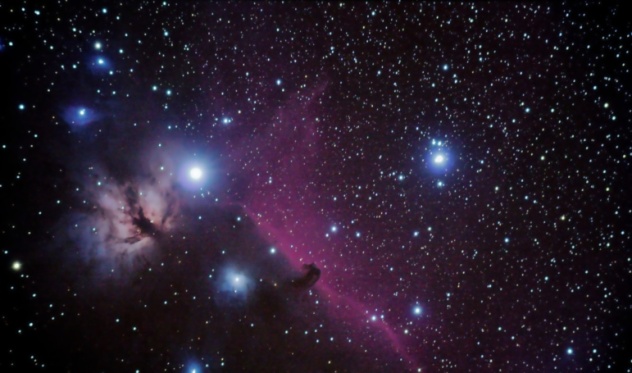
Pandeism is a hybrid of deism (belief that God created the world and then left it to its own devices) and pantheism (the belief that God and the universe are one and the same). Pandeists hold that if the standard-model omnipotent, omniscient, and omnipresent God exists, then the only way for Him to indeed fulfill all those requirements for supreme Godhood would be if He was synonymous with the universe itself. Some Pandeists hold that the universe is actually sentient, but the argument against this is the fact it would be as difficult for a sentient Universe-God to have personal relationships with entities existing within itself as it would be for a human being to listen to the prayers of every God-bothering neuron in their head.
Other Pandeists believe that God created the universe by literally becoming the universe, losing sentience in the process. In effect, God sacrificed his consciousness to create the universe in order to experience life through many disparate consciousnesses. He is therefore not really responsible for good and evil in the world; they are just manifestations of a single consciousness rendered into myriad forms: You’re part of God, your loving wife is God, your mean boss is God, the table is God, and so on. In the end, the universe will fold back into a single consciousness, and God will be restored to His former omnipotence, probably with an incredible hangover.
Scott Adams, creator of the Dilbert comic strip, explored Pandeism in his book God’s Debris, which said that God destroyed himself in the Big Bang and now exists as the smallest units of matter and the law of probability. The human drive for communication and inter-connectivity through technology is a manifestation of God’s drive to pull Himself back together.
1 Azathoth
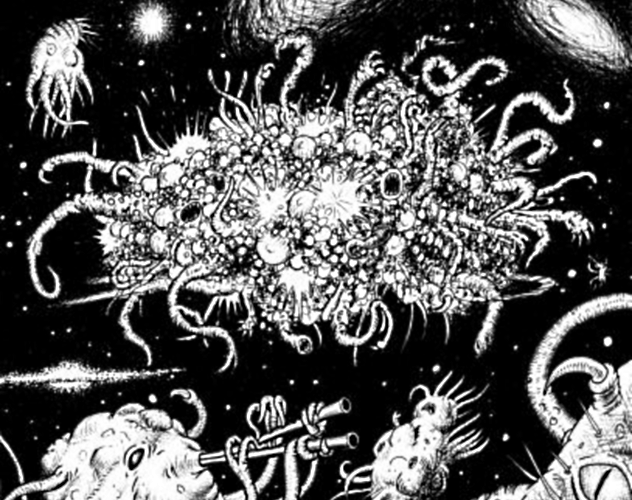
Cosmic horror writer H.P. Lovecraft postulated the existence of a pantheon of immensely powerful alien deities and deity-like beings antithetical and inimical to human rationality and comprehension, holding dominion over an uncaring and malevolent cosmos. The truth of the universe is something that the human mind can never truly comprehend; understanding the first principles guiding the universe causes madness. At the penultimate position in Lovecraft’s pantheon was Azathoth, the Blind Demon Sultan Idiot-God at the center of the universe. He is primal, mindless chaos who rules time and space from a black throne.
The flute of Azathoth is a metaphor for an engine of creation transforming chaos into cosmos, and his music is the harmonics that keep existence in existence. He is served by a god-messenger named Nyarlathotep, who possesses consciousness and will but in a myriad of forms. He serves as the senses and mind of Azathoth but is ultimately subservient. Some theorists of Lovecraft’s thought associate Azathoth with a black hole at the center of the Milky Way (or universe), others with the nuclear chaos of the Sun, and still others with the law of infinite contraction (in contrast with the deity Yog-Sothoth, present in all times and all places, associated with the law of infinite expansion).
In Lovecraft’s fiction, Azathoth is described as “monstrous nuclear chaos beyond angled space” and “gnawing, ravenous,” perhaps explaining the references to a black hole. Fritz Leiber described Azathoth as “the purposeless, mindless, yet all-powerful universe of materialistic belief.” While Lovecraft never came out and stated outright that Azathoth is God, the obvious conclusion has been drawn by later theorists, and many of his ideas have been adopted by modern occultists.
David Tormsen acts, and the comment section reacts. Send your theological speculations to [email protected].
